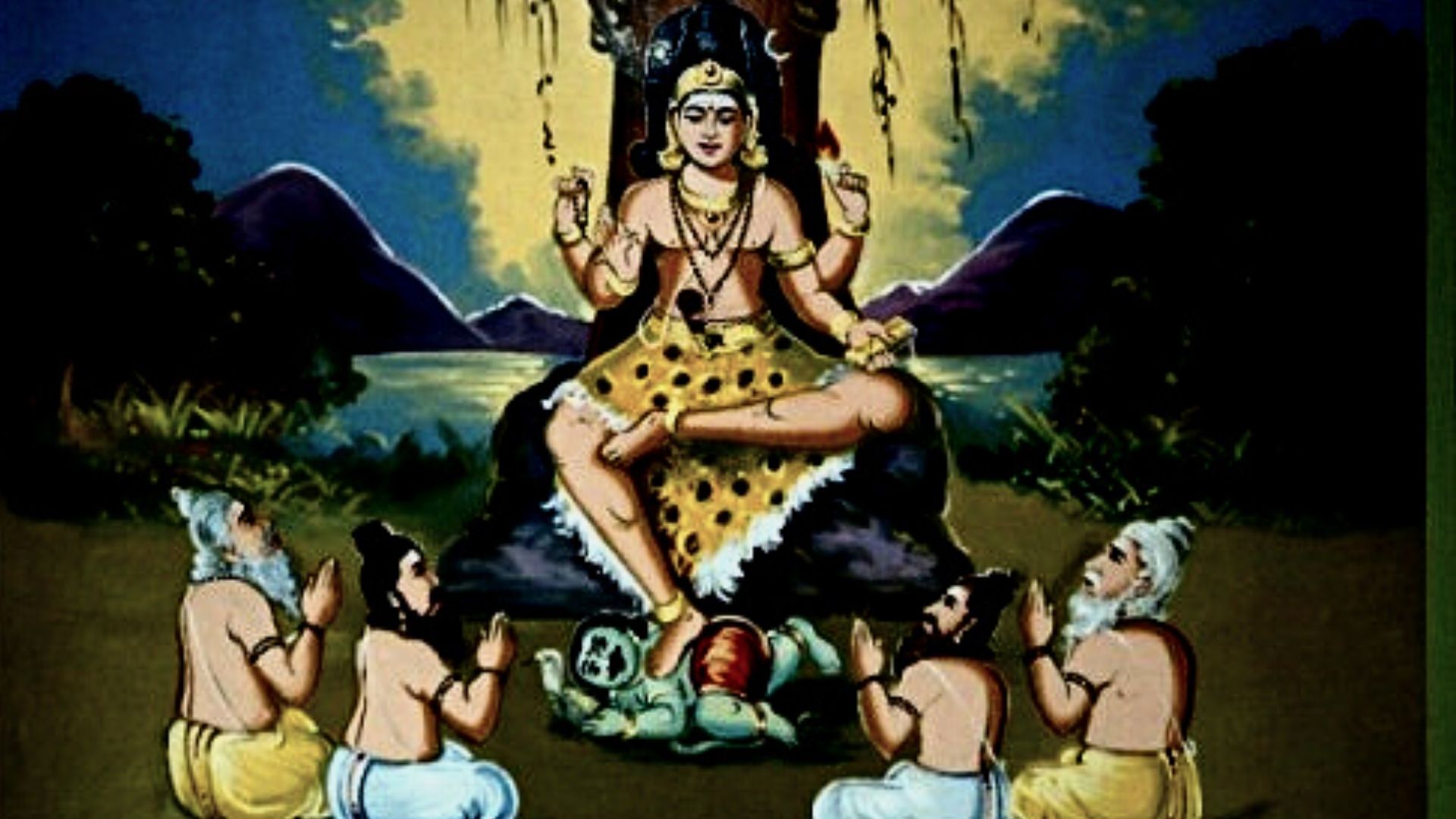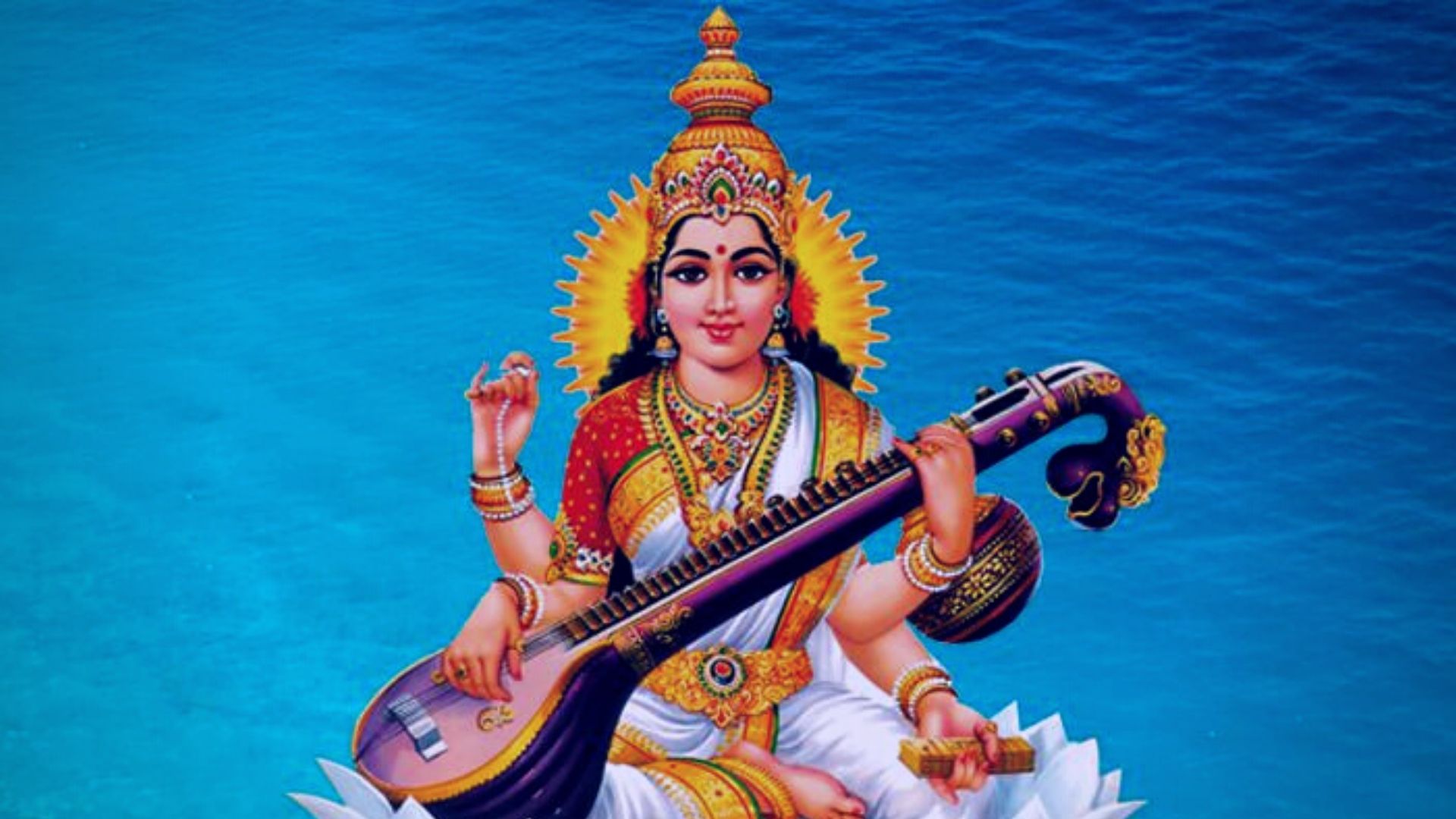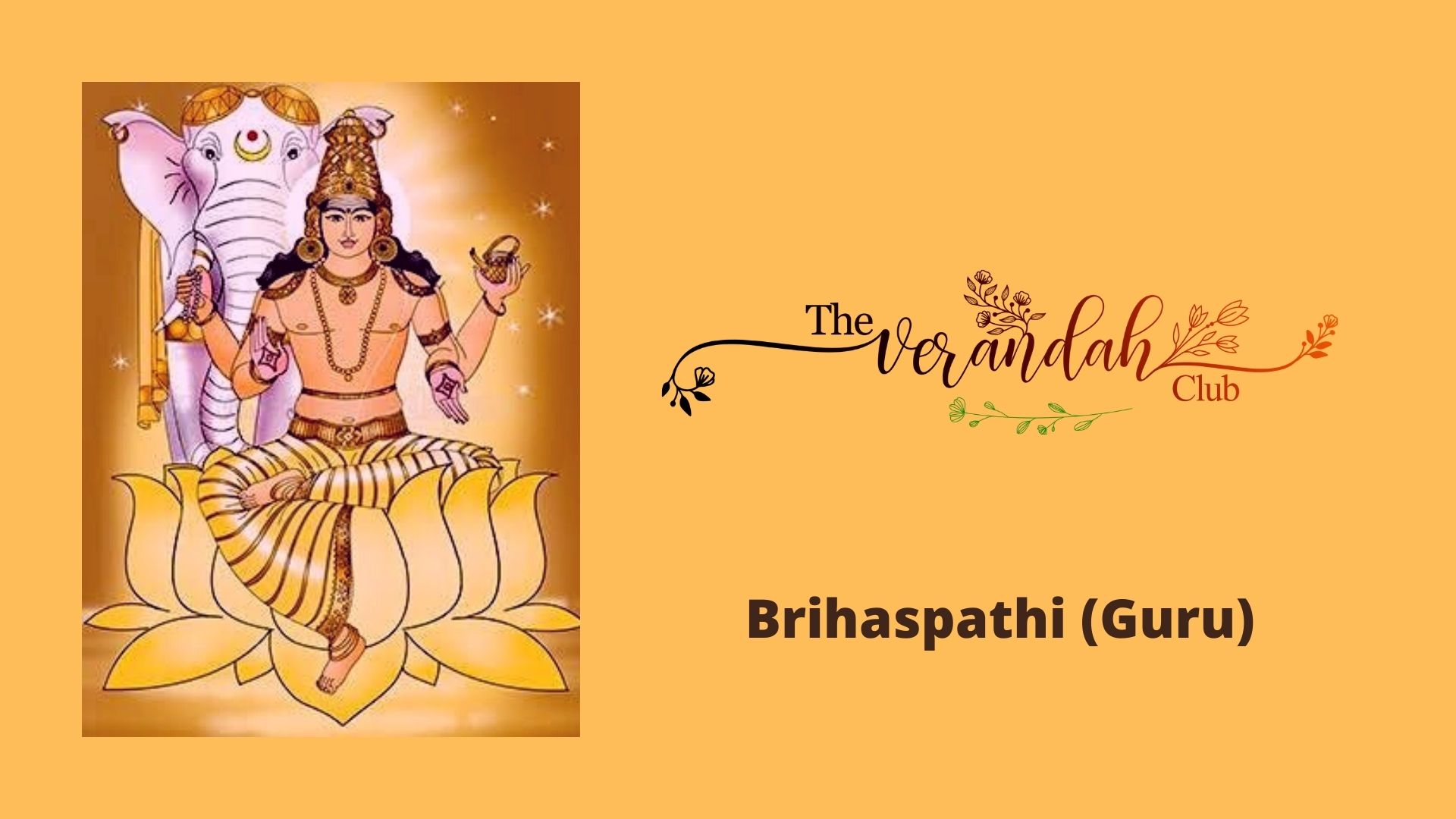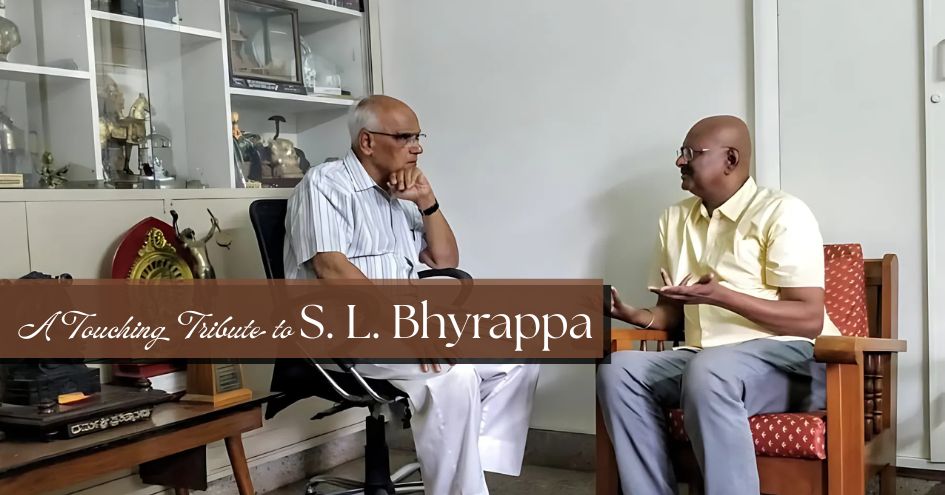Brihaspati Vaaram or Guru Vaaram falls on the fifth day of the week, i.e., Thursday. It is represented by the Planet Jupiter. Guru is an important person in the life of every individual. The famous phrase, “Maatha, Pithaa, Guru, and Dheivam,” signifies the importance of guru. Devotees visit the temple in order to propitiate the guru. The shiva temples are endowed with the guru in two locations. Guru or Jupiter is found in the navagraha shrine and guru is also revered as Dakshinamoorthy on the same premises.
Dakshinamoorthy faces the south, and he sits under a Banyan tree. The four maaniska puthras of Brahma, Sanaka, Sanatana, Sananda and Sanatkumara are found around Dakshinamoorthy. They assimilated atma-vidya from the great teacher. India is known as the Vishwaguru. No wonder we have the banyan as our national tree.

The banyan tree begins to produce shoots, and it does so after attaining maturity. The shoots, in turn, move towards the ground and embrace the soil. They, in turn, become similar to the parent tree. Eventually, these shoots, which have been converted into trees, begin to produce shoots and the process continues. The guru is similar to a banyan tree, or we can say that the banyan tree is similar to a guru. We can clearly understand that the guru makes his or her student assimilate and dispense knowledge in the same manner that was adopted to absorb the same.
This undying transfer of knowledge is unique to India. The knowledgeable devout are aware that Dakshinamoorthy is none other than the great Asutosh (Shiva). Skanda, or Karthikeya, is believed to be the flame of knowledge that emerged from Dakshinamoorthy. Therefore, he is saluted as Swaminatha in Swamimalai. It was here that Swaminatha made Brahma understand the meaning of the pranava mantra, Om. The followers of Senthilnatha understand that he is the guru at Thiruchendoor. The famous pravachana kartha, Sengalipuram Anantharaama Deekshithar would request people to read Skanda Puranam in order to get rid of ignorance. Many who had followed his advice were able to see the light of wisdom getting lit within themselves.
The guru at Alangudi is revered by the people of our country. They offer lamps to this deity, while circumambulating the shrine at Alangudi near Kumbakonam. No wonder Brahaspathi Vaaram or Thursday is important. Brahaspathi is the deva guru and hence, this day is more potent with regard to knowledge acquisition.
The faithful offer white channa garlands and turmeric dipped fabrics to Dakshinamoorthy in order to acquire knowledge which is eternal. Indians are known to abstain from worldly things. The ones who are interested in receiving the grace of the eternal guru are known to fast on Thursdays. They would just have a single meal before dusk and would keep away from items like onions, garlic, and rice. A vow of celibacy would be observed at that time. This will be accompanied by a visit to a temple. Practices of this kind have helped Indians to meet the world of knowledge.

Saraswathi is the giver of knowledge. This deity is famous throughout the country and the Vedic River Saraswati signifies her. Indians had nurtured themselves on the banks of River Saraswati and the Indian civilization was therefore known as the Saraswati Civilization. Several educational institutions have a shrine for Saraswathi. The most important shrine of Saraswathi in the world is located in Koothanoor in TamilNadu (Temple State of the World). Eager parents and students visiting Koothanoor offer White Lotuses (Signifying Knowledge) to Goddess Saraswathi and also place books, writing instruments, and computers before her. This is being done in order to get wiser.
Hayagreeva, the horse-faced form of Vishnu, is said to signify eternal wisdom. This deity had transferred knowledge to the common man. The shrine of Hayagreeva at Thiruvaheendrapuram in Cuddalore (Tamil Nadu, India) is the most important shrine connected with the deity of knowledge in the world. This shrine is accessed by climbing 74 steps. Each of these steps signifies the simhasanaadhi pathi-s (Pontiffs) appointed by Ramanujaacharya during the eleventh century. The duty of these pontiffs was to share the knowledge that would help people attain the goals of life, dharma, artha, kama, and moksha. These goals are collectively known as purusharthaa-s and India is the only country which prescribes the goals of life to its citizens.
The followers of Madhvacharya are known for the worship of Hayagreeva. An old icon of Hayagreeva with Aanjaneya as his mount had been kept safely inside the Madhvasarovara at Udippi. From the times of Vaadhiraaja (1480–1600), one Venkataramanachar of Coimbatore received the news about Hayavadana (Hayagreeva) in a dream during the 19th century. He immediately gathered himself in Udippi and was pleasantly surprised to learn that the local Tahsildar and the Pontiff of the Sodhe Mutt had received similar dreams. A diver was engaged, and they recovered a box which contained an image of Hayavadana seated on the shoulder of Aanjaneya. An overjoyed Venkataramanachar hugged the icon and offered prayers. He brought Hayavadana to Coimbatore and performed Sudhamangalam. Jayatheertha had composed the great text, ‘Nyaya Sudha’ and this text elucidated on the nature of jeevathma and paramathma. Nyaya Sudha was based on the treatise of Madhvacharya. The arrival of Hayavadana heralded the arrival of knowledge, and Coimbatore became the knowledge capital of Tamil Nadu.

There have been several guru-s, Deva Guru Brihaspati, Daithya Guru Sukracharya, and Raaja guru-s like Vasishta and their guidance have helped our civilization to sustain. The adivce of Vaisishta to Rama had been enshrined in ‘Yoga Vasishta’ and this text is a must for everyone. Sri Krishna has given his advice through the ‘Bhagavad Gita’, Vidura has shared his knowledge through the ‘Vidhura Neethi’, Beeshmacharya has elucidated on eternal Raaja Dharma to Yudhishtira in the Mahabharatha and the texts like ‘Kapila Gita’, ‘Shiva Gita,’ and ‘Avadootha Gita’, throw a lot of light. Our aacharyas had understood that one size does not fit and hence they have been kind enough to serve knowledge in different forms. This vast buffet of knowledge and philosophy has made India the fountainhead of philosophies.
Remembering the knowledge and the Guru on Brihaspati Vaaram is very important. May the givers of knowledge, Adi Shankara, Ramanujaacharya, Madhvaacharya, and others bless everyone with the best of knowledge. Let it be the knowledge that was sought by people like Yudhishtira and Tenali Ramakrishna. The wisdom of aacharyas like Chankya will make India prevail in the committee of nations.
NEXT ARTICLE

Subramania Bharati, often referred to as Mahakavi Bharati (Great Poet Bharati), was a revolutionary poet, journalist, and social reformer whose words...

Some writers tell stories, and then there are those rare souls who hold up a mirror to our civilisation, our history, and our innermost selves. Sri Sa...

As the Tricolour rises high on 16 December, Vijay Diwas calls out to the conscience of the nation.It reminds us of a timeless truth:Freedom is earned,...